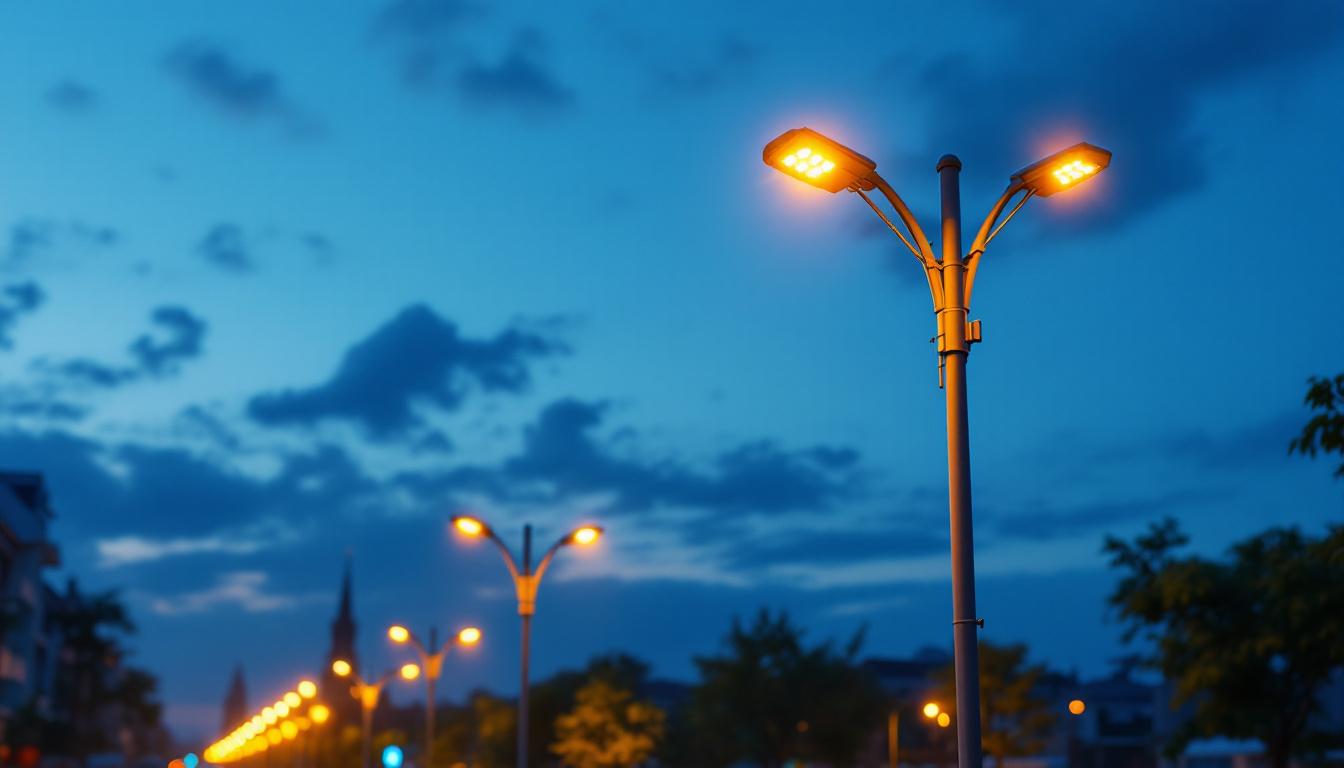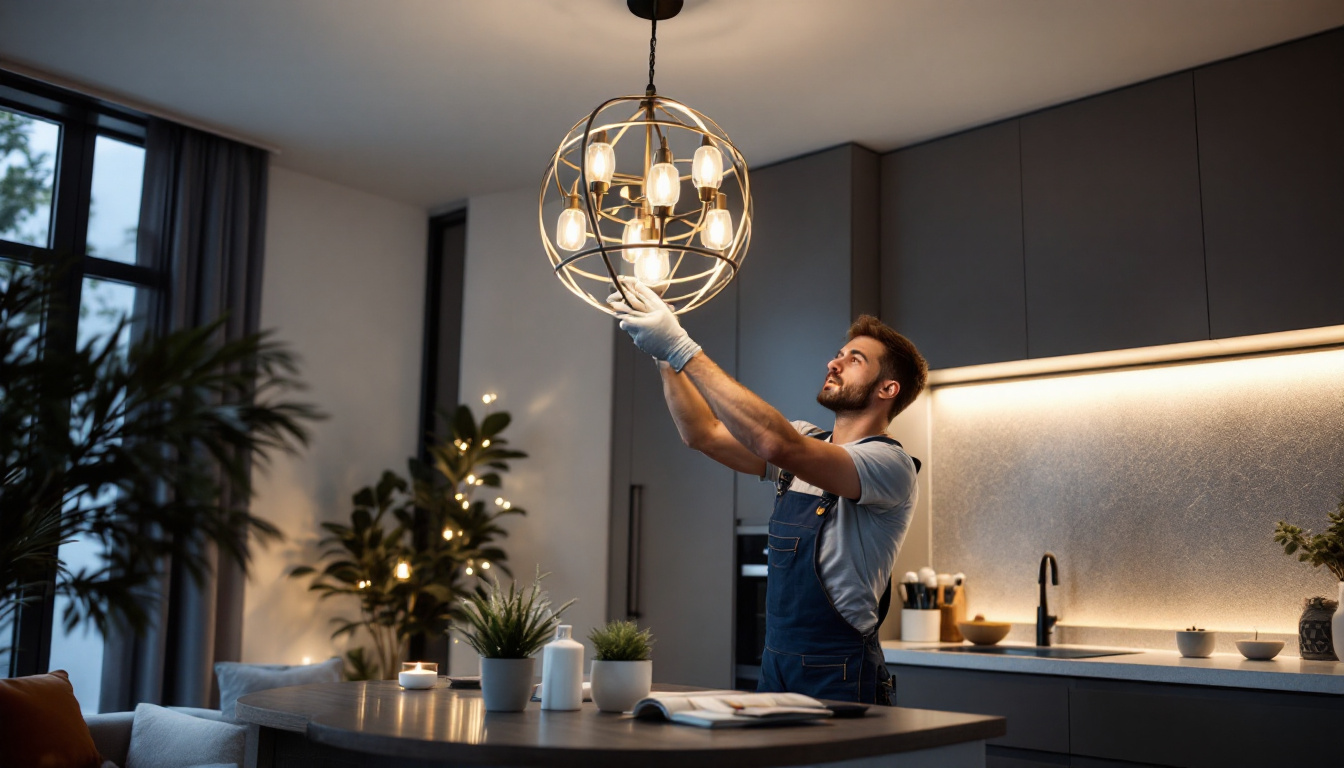
In the ever-evolving landscape of lighting technology, LED (Light Emitting Diode) bulbs have emerged as a game-changer. For lighting contractors, understanding how these bulbs work and the real-world applications can enhance their service offerings and improve client satisfaction. This article delves into the mechanics of LED bulbs, their advantages, and compelling success stories that highlight their effectiveness in various settings.
LED technology operates on a fundamentally different principle compared to traditional incandescent or fluorescent bulbs. At the core of an LED bulb is a semiconductor material that emits light when an electric current passes through it. This section will explore the components and functioning of LED bulbs in detail.
Understanding the components of an LED bulb is crucial for lighting contractors. An LED bulb typically consists of the following parts:
The process of light emission in LEDs is known as electroluminescence. When voltage is applied to the semiconductor, electrons move across the junction and release energy in the form of light. The color of the light emitted depends on the materials used in the semiconductor. For instance, different combinations of gallium, arsenic, and phosphorous can produce a spectrum of colors.
This mechanism not only contributes to the energy efficiency of LED bulbs but also allows for a wide range of color temperatures, from warm to cool white light, making them suitable for various applications.
Moreover, the versatility of LED technology extends beyond mere color variation. The compact size of LED chips allows them to be arranged in various configurations, enabling innovative designs that can fit into tight spaces or create unique lighting effects. This adaptability has led to the rise of LED strip lights, which can be used for accent lighting, under-cabinet illumination, or even in architectural applications, providing both functional and aesthetic enhancements to spaces.
Additionally, the longevity of LED bulbs—often rated for 25,000 hours or more—means they require less frequent replacement compared to traditional lighting options. This not only translates to cost savings for consumers but also contributes to reduced waste in landfills, aligning with growing environmental concerns. As technology continues to advance, the integration of smart features into LED lighting, such as dimming capabilities and remote control through mobile apps, further enhances their appeal and functionality in modern homes and businesses.
The advantages of LED lighting extend beyond mere energy efficiency. For lighting contractors, these benefits can translate into improved project outcomes and enhanced customer satisfaction. Here are some key advantages that make LED lighting a preferred choice.
One of the most significant advantages of LED bulbs is their energy efficiency. Compared to incandescent bulbs, LEDs use up to 80% less energy to produce the same amount of light. This efficiency not only reduces electricity bills for clients but also contributes to a lower carbon footprint, aligning with sustainability goals that many businesses strive to achieve. Additionally, the lower energy consumption of LEDs can lead to a reduced demand on power plants, which can help decrease the overall environmental impact of energy production.
LED bulbs have a much longer lifespan than traditional lighting options. While incandescent bulbs may last around 1,000 hours, LED bulbs can last anywhere from 15,000 to 50,000 hours or more. This longevity means fewer replacements and lower maintenance costs for clients, making LED lighting an attractive investment. Furthermore, the extended lifespan of LEDs can significantly reduce waste, contributing to a more sustainable approach to lighting solutions.
Moreover, LEDs are more durable than fragile incandescent and fluorescent bulbs. They are resistant to shock, vibrations, and temperature fluctuations, making them ideal for various environments, including industrial and outdoor settings. This robustness is particularly beneficial in applications where lighting fixtures are exposed to harsh conditions, such as in warehouses or construction sites. The ability to withstand these challenges not only enhances the reliability of LED installations but also provides peace of mind for clients who require consistent performance in demanding environments.
Another noteworthy aspect of LED technology is its versatility in design and application. LEDs come in a wide range of shapes, sizes, and color temperatures, allowing for creative lighting solutions that can enhance the aesthetics of any space. From warm white tones that create a cozy atmosphere in residential settings to bright, cool white lights that improve visibility in commercial spaces, the adaptability of LED lighting can meet diverse needs and preferences. This flexibility also extends to smart lighting systems, where LEDs can be integrated with advanced controls for automated dimming, color changing, and even scheduling, further enhancing their appeal to modern consumers.
The versatility of LED lighting has led to its adoption in numerous applications across different sectors. Lighting contractors can leverage these real-world success stories to showcase the benefits of LED technology to potential clients.
In commercial settings, LED lighting has proven to be a transformative solution. Retailers, for instance, have embraced LED technology to enhance the shopping experience. A prominent clothing retailer replaced its traditional lighting with LED fixtures, resulting in a 60% reduction in energy costs.
Additionally, the improved color rendering of LED lights helped to showcase the merchandise more effectively, leading to increased sales. The retailer’s success story serves as a testament to the impact of LED lighting on both operational efficiency and customer engagement.
In the residential sector, homeowners are increasingly opting for LED lighting due to its aesthetic appeal and energy savings. A successful case involved a lighting contractor who renovated a family home, replacing outdated fixtures with modern LED options.
The project not only enhanced the home’s ambiance but also reduced the family’s energy consumption significantly. The contractor reported that the homeowners were thrilled with the results, leading to referrals and additional projects in the neighborhood.
LED technology has also made significant inroads into outdoor and street lighting. A city that implemented LED streetlights experienced a dramatic reduction in energy costs—up to 70%—while simultaneously improving visibility and safety for pedestrians and drivers.
This initiative not only enhanced the city’s image but also contributed to lower maintenance costs due to the longevity of LED fixtures. Such success stories can serve as powerful examples for lighting contractors looking to pitch LED solutions to municipal clients.
While the advantages of LED lighting are compelling, it is essential to acknowledge the challenges that may arise during implementation. Lighting contractors should be prepared to address these considerations when discussing LED solutions with clients.
One of the primary concerns for clients considering LED lighting is the initial investment. Although LED bulbs are generally more expensive upfront than traditional bulbs, the long-term savings on energy bills and maintenance costs often outweigh this initial expense. Educating clients about the total cost of ownership can help alleviate concerns and encourage adoption.
Another challenge is ensuring compatibility with existing lighting systems. In some cases, retrofitting older fixtures to accommodate LED technology may require additional modifications or replacements. Lighting contractors should assess the current infrastructure and provide clients with a comprehensive plan that outlines any necessary upgrades.
The future of LED lighting is bright, with ongoing advancements in technology and design. Lighting contractors should stay informed about emerging trends to offer clients the best solutions available.
Smart lighting systems that integrate with home automation technologies are gaining popularity. These systems allow users to control their lighting remotely, adjust brightness levels, and even change colors through smartphone apps or voice commands. Contractors can enhance their service offerings by incorporating smart LED solutions into their projects.
Human-centric lighting focuses on creating environments that promote well-being and productivity. This approach considers factors such as color temperature and intensity to mimic natural light patterns. As awareness of the impact of lighting on health grows, lighting contractors can position themselves as experts in designing spaces that prioritize occupant comfort.
LED lighting has revolutionized the way we illuminate our spaces, offering energy efficiency, longevity, and versatility. For lighting contractors, understanding the mechanics of LED technology and its real-world applications is essential for providing clients with informed recommendations. By showcasing success stories and addressing potential challenges, contractors can effectively advocate for LED solutions that meet the diverse needs of their clients.
As the lighting industry continues to evolve, staying abreast of trends and innovations will empower contractors to remain competitive and deliver exceptional value in their projects. Embracing LED technology is not just a trend; it is a commitment to sustainability, efficiency, and enhanced quality of life for all.
Ready to elevate your lighting projects with the efficiency, longevity, and versatility of LED technology? At LumenWholesale, we provide lighting contractors with the highest quality, spec-grade LED products at unbeatable wholesale prices. Say goodbye to local distributor markups and hello to superior lighting solutions that fit your budget. With our commitment to quality, affordability, and convenience, you’ll find everything you need to light up your clients’ spaces in a sustainable and cost-effective way. Plus, with free shipping on bulk orders, you can stock up on premium lighting without any hidden fees. Don’t compromise on quality—choose LumenWholesale for Wholesale Lighting at the Best Value and make your next project a shining success.

Discover the frequent pitfalls lighting contractors encounter with tiny 2-prong light bulbs.

Discover why lighting contractors should prioritize pole street lights in urban planning.

Discover the top mistakes lighting contractors make when dealing with fancy light bulbs.

Discover the crucial role of affordable light fixtures in the success of lighting contractors.